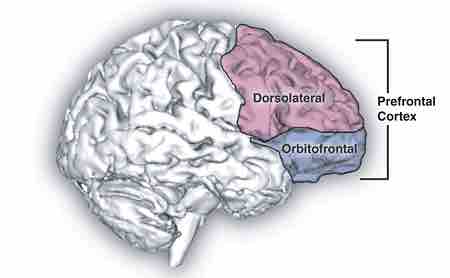"Executive function" is an umbrella term for the management, regulation, and control of cognitive processes, including working memory, reasoning, problem solving, social inhibition, planning, and execution. The executive system is a theoretical cognitive system that manages the processes of executive function. This system is thought to rely on the prefrontal areas of the frontal lobe, but while these areas are necessary for executive function, they are not solely sufficient.
Role of the Executive System
The executive system is thought to be heavily involved in handling novel situations outside the domain of the routine, automatic psychological processes (i.e., ones that are handled by learned schemas or set behaviors). There are five types of situation where routine behavior is insufficient for optimal performance, in which the executive system comes into play:
- planning or decision making;
- error correction or troubleshooting;
- novel situations with unrehearsed reactions;
- dangerous or technically difficult situations;
- overcoming of a strong habitual response; resisting temptation.
A prepotent response is a response for which immediate reinforcement (positive or negative) is available or is associated with that response. Executive functions tend to be invoked when it is necessary to override prepotent responses that would otherwise occur automatically. For example, on being presented with a potentially rewarding stimulus like a piece of chocolate cake, a person might have the prepotent "automatic" response to take a bite. But if this behavior conflicts with internal plans (such as a diet), the executive system might be engaged to inhibit that response.
Anatomy of the Executive System
Historically, the executive functions have been thought to be regulated by the prefrontal regions of the frontal lobes, but this is a matter of ongoing debate. Though prefrontal regions of the brain are necessary for executive function, it seems that non-frontal regions come into play as well. The most likely explanation is that while the frontal lobes participate in all executive functions, other brain regions are necessary. The major frontal structures involved in executive function are:
- Dorsolateral prefrontal cortex: associated with verbal and design fluency, set shifts, planning, response inhibition, working memory, organizational skills, reasoning, problem solving, and abstract thinking.
- Anterior cingulate cortex: inhibition of inappropriate responses, decision making, and motivated behaviors.
- Orbitofrontal cortex: impulse control, maintenance of set, monitoring ongoing behavior, socially appropriate behavior, representing the value of rewards of sensory stimuli.

The prefrontal cortex
The different parts of the prefrontal cortex are vital to executive function.
Development of the Executive System
The abilities of the executive system mature at different rates over time because the brain continues to mature and develop connections well into adulthood. Therefore, a developmental framework is helpful. Executive-function development corresponds to the development of the growing brain; as the processing capacity of the frontal lobes (and other interconnected regions) increases, the core executive functions emerge. Growth spurts also occur in the development of the executive functions; their maturation is not a linear process.
In early childhood, the primary executive functions to emerge are working memory and inhibitory control. Cognitive flexibility, goal-directed behavior, and planning also begin to develop, but are not fully functional. During preadolescence, there are major increases in verbal working memory, goal-directed behavior, selective attention, cognitive flexibility, and strategic planning. In adolescence, these functions all become better integrated as they continue developing. During early adulthood (from ages 20 to 29) executive functions are at their peak, but in later adulthood these systems begin to decline. Cognitive flexibility is resilient, however, and does not usually start declining until around age 70.